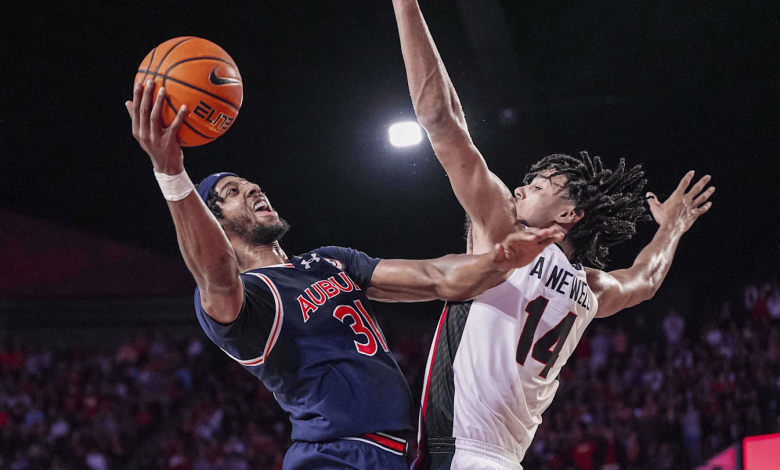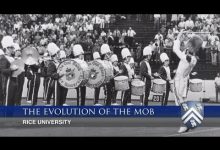After a close game against Georgia, Auburn’s KenPom ratings decline.

After a Close Game Against Georgia, Auburn’s KenPom Ratings Decline
In the highly competitive landscape of college basketball, every game counts. From a team’s overall performance to the individual stats of players, every factor plays a part in how a team is perceived both by the public and, more importantly, by metrics like the KenPom rankings. Auburn University’s men’s basketball team, which has been riding a wave of success over the past few seasons, faced a challenging test in their recent game against the University of Georgia. Despite a strong effort, the game ended up being much closer than many anticipated. The result was a slight dip in Auburn’s KenPom ratings, a significant development considering how the ratings are calculated and what they indicate about the team’s performance.
KenPom, short for Ken Pomeroy, is one of the most widely recognized and respected metrics in college basketball. It uses advanced statistical analysis to rank teams based on several key factors, including offensive and defensive efficiency, tempo, and strength of schedule. For Auburn, which has been a consistent contender in the SEC and on the national stage in recent years, a decline in KenPom ratings is not just a minor detail—it’s an indication of how close they are to becoming one of the top teams in the country and a reminder of how a single game can shift the perception of a team.
This article takes a deep dive into what went wrong for Auburn in their game against Georgia, how the KenPom ratings work, and what it means for their season moving forward. As the Tigers continue their march toward the postseason, these metrics will be an important indicator of their trajectory and whether they can achieve their goals for the year.
Auburn’s Performance Against Georgia: A Closer Look
Auburn’s basketball team entered their matchup against Georgia with high expectations. They had been one of the stronger teams in the SEC, and their combination of explosive offense and stout defense had made them a formidable opponent for anyone. However, the game against Georgia was a different kind of challenge, one that was more difficult than anticipated.
Georgia, while not traditionally seen as a powerhouse in the SEC, has proven to be a scrappy team this season. They were able to exploit some of Auburn’s weaknesses, particularly in terms of offensive efficiency. While Auburn has been known for their fast-paced, high-scoring style of play, Georgia’s defense managed to slow down the Tigers’ rhythm, particularly in the second half. The game became a grind, and Auburn struggled to find consistency in both offense and defense.
At first glance, it seemed like Auburn should have been able to handle Georgia with relative ease. But the Bulldogs came out with intensity, challenging Auburn’s defense and forcing them into tough shot selections. Auburn’s shooting, particularly from beyond the arc, was below their usual standards. The Tigers’ inability to hit consistent three-pointers limited their offensive efficiency, and Georgia capitalized on it. Additionally, Georgia’s defense managed to clog the paint, preventing Auburn from exploiting their usual inside game.
Auburn’s defense, which had been their hallmark all season, also showed vulnerabilities. Although they managed to contain Georgia for the most part, the Bulldogs found gaps, especially in transition. Georgia’s ability to score in transition created problems for Auburn, who usually prides itself on suffocating defensive pressure.
The game ended in a tight finish, and while Auburn was able to pull out a win, it was not without significant difficulty. The 78-72 scoreline was closer than what many analysts expected, especially given Auburn’s position as one of the top-ranked teams in the nation. The win itself didn’t hurt the Tigers, but the lackluster performance had consequences on their overall efficiency ratings, which would ultimately be reflected in their KenPom rankings.
KenPom Ratings: What They Are and How They Impact Teams
KenPom rankings are a data-driven evaluation system that ranks college basketball teams based on advanced statistics. Unlike traditional rankings, which are often subjective and based on win-loss records, KenPom uses a set of efficiency metrics to determine the ranking of teams. The two primary components of KenPom rankings are offensive efficiency (OE) and defensive efficiency (DE), but there are other factors that contribute to the overall ranking.
Offensive Efficiency (OE): This metric measures how effectively a team scores points per 100 possessions. The higher the number, the more efficient a team is at converting their offensive opportunities into points. A team like Auburn, which plays at a fast tempo and often scores a lot of points, would typically have a high offensive efficiency rating.
Defensive Efficiency (DE): Conversely, defensive efficiency looks at how well a team defends, specifically how many points they allow per 100 possessions. Auburn, known for their aggressive defense, usually performs well in this category as they are able to limit the opposing team’s scoring opportunities.
Tempo: The tempo metric measures the speed at which a team plays. Teams that play fast, like Auburn, have a higher tempo, while teams that prefer a slower, more deliberate pace have a lower tempo.
Other factors such as strength of schedule, effective field goal percentage, free throw rate, and turnover rate also contribute to the overall KenPom ranking. These rankings are updated regularly, with each game contributing to the changes in a team’s metrics.
For Auburn, their performance against Georgia had a significant impact on their KenPom rankings. Despite the win, the game exposed some weaknesses in their offensive efficiency and defensive consistency. Auburn’s shooting struggles, particularly in the second half, caused their offensive efficiency rating to take a hit. While they are still one of the top teams in the country, this drop in offensive efficiency contributed to their decline in the rankings.
The Impact of a Decline in KenPom Ratings
Auburn’s drop in the KenPom rankings, although not dramatic, has a ripple effect on their season. These rankings are more than just a number—they represent how the team is viewed by the basketball community and, more importantly, how they are evaluated when it comes to tournament selection and seeding.
Tournament Seeding Implications: The NCAA tournament selection committee places a significant amount of weight on metrics like KenPom when determining seeding for the tournament. While the selection committee takes into account overall records, conference championships, and head-to-head results, KenPom rankings provide an important look at how teams are performing relative to one another in terms of efficiency. A drop in KenPom can impact Auburn’s seeding in the tournament, potentially pushing them to a lower seed, which would result in a more difficult path through the tournament bracket.
Strength of Schedule Considerations: KenPom also takes strength of schedule into account. For Auburn, being a member of the competitive Southeastern Conference (SEC) means that their schedule is challenging, but it also means that their opponents’ rankings play a crucial role in their own metrics. A close game against a team like Georgia, which is not ranked among the top teams in the SEC, can hurt Auburn’s overall efficiency ratings and, as a result, their KenPom ranking. While Auburn still plays a strong schedule, their perceived drop in efficiency could lead to questions about their ability to handle pressure in big moments.
Recruiting and Perception: For programs like Auburn, where the coach and recruiting staff work hard to build a legacy of success, KenPom rankings have a psychological impact as well. A drop in the rankings could impact how the team is viewed by potential recruits and fans. Top-tier recruits often look at a program’s national ranking as an indicator of success, and a decline in KenPom rankings might affect the narrative of Auburn’s dominance in the sport.
The Road Ahead for Auburn: How They Can Recover
While the loss of ground in the KenPom rankings is a setback, it does not define Auburn’s season. The Tigers are still a very talented team with several opportunities ahead to prove their worth.
Improving Offensive Efficiency: Auburn will need to find a way to shore up their offensive efficiency, especially from beyond the arc. Their struggles against Georgia—where they shot poorly from three-point range—are something they can work on in practice. The Tigers are capable of running explosive offensive sets, but they’ll need to find more consistency in their shooting if they want to keep pace with the best teams in the nation.
Strengthening Defense: Despite the close game against Georgia, Auburn’s defense remains one of their strongest assets. However, there are areas where they can still improve, particularly in transition defense. Auburn will need to maintain their defensive intensity throughout the entire game, not just in spurts. With their strong defensive personnel, this is an area they can tighten up, preventing teams from getting easy points in transition.
Adjusting to Adversity: One of the hallmarks of any championship-caliber team is their ability to bounce back after a subpar performance. Auburn’s coaching staff, led by Bruce Pearl, is known for making in-game adjustments and motivating his players to rise to the occasion. If they can regroup after this close win, they will be poised for success in future games.









